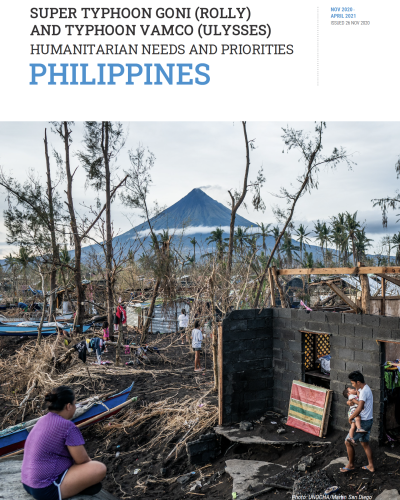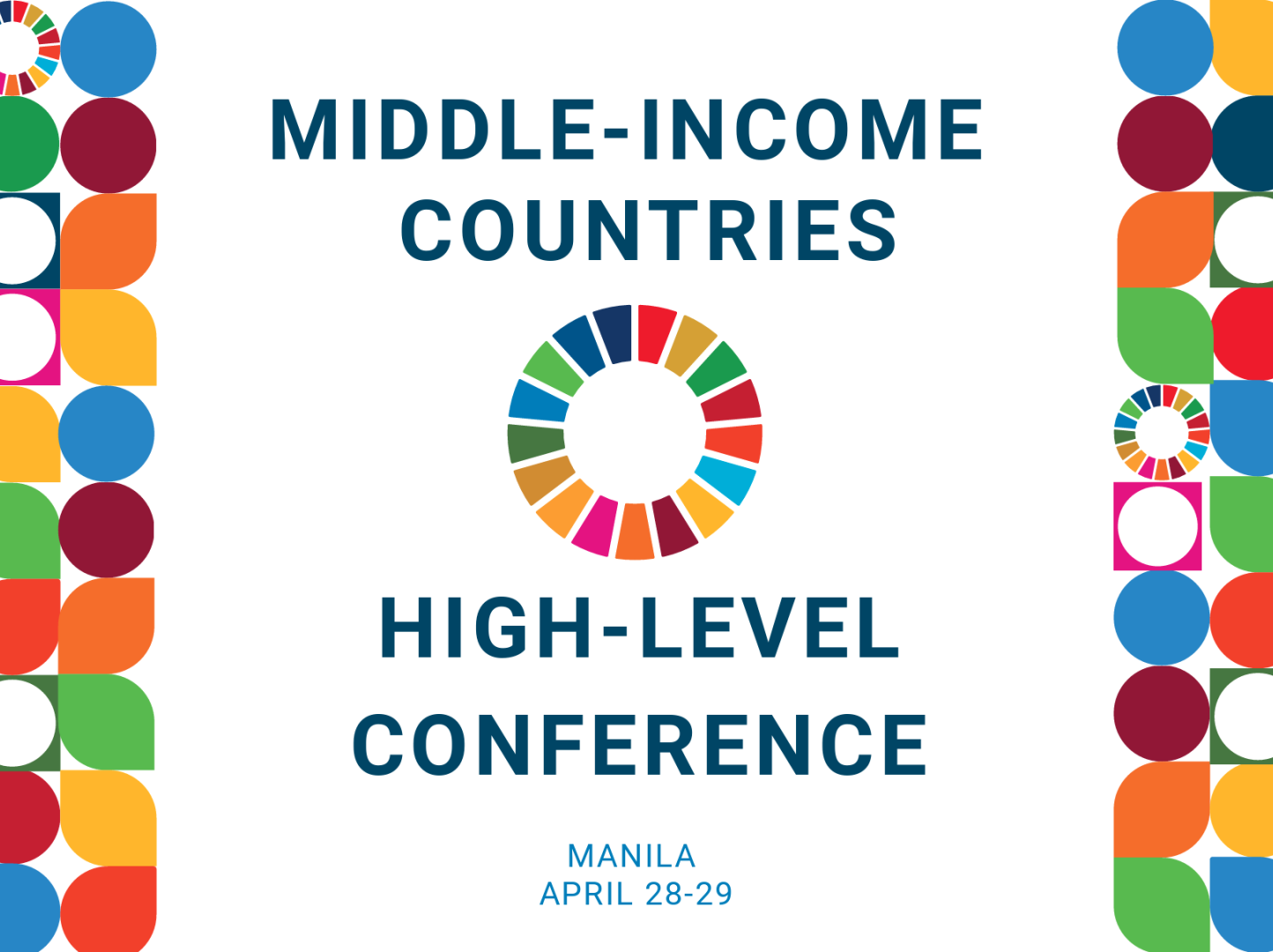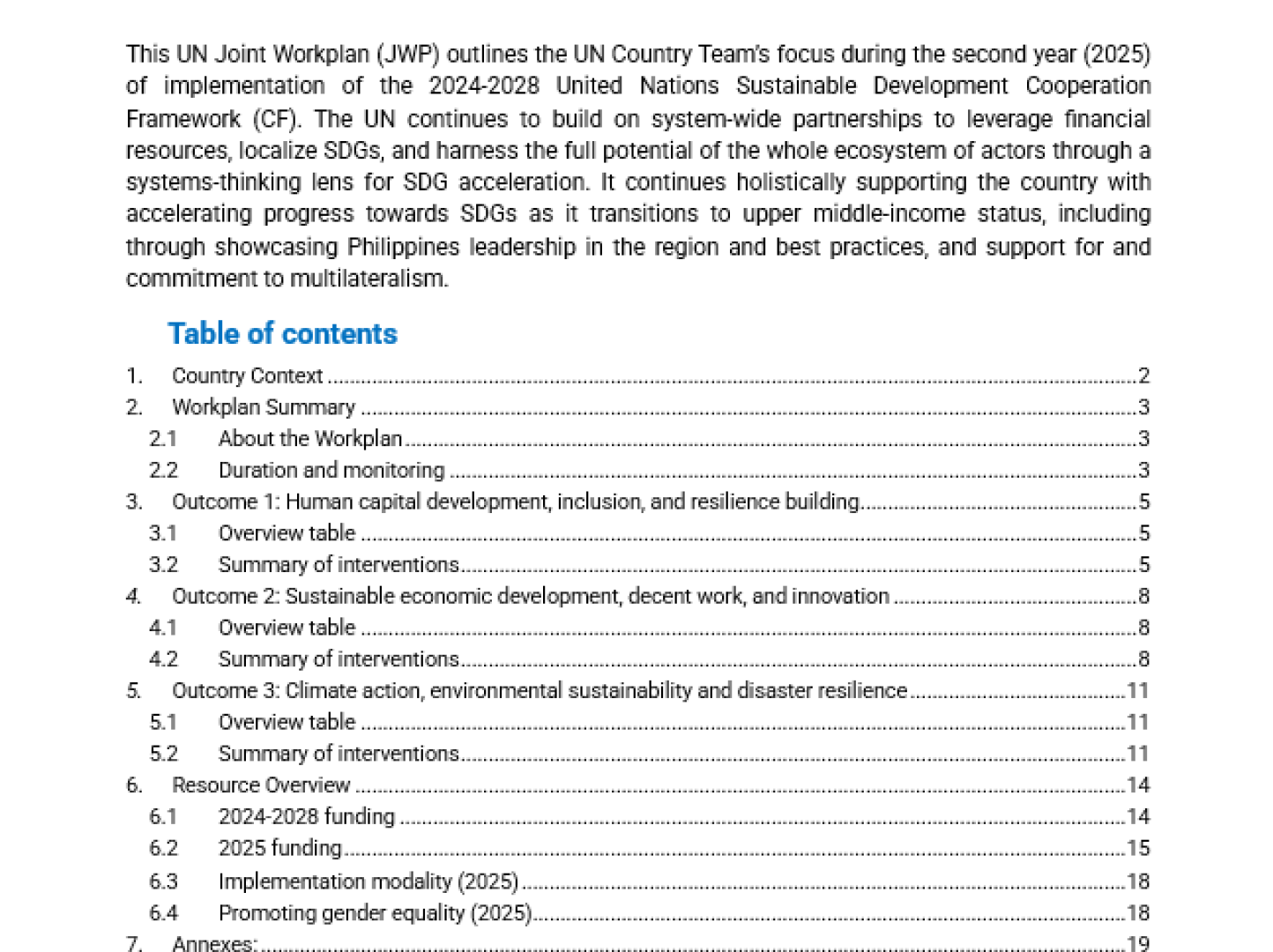Super Typhoon Goni (Rolly) and Typhoon Vamco (Ulysses) Humanitarian Needs and Priorities (Nov 2020 - April 2021)

The Humanitarian Needs and Priorities document was launched on 9 November 2020 to address immediate and early recovery needs of the areas hardest hit by Super Typhoon Goni. It was subsequently revised and released on 26 November as this Super Typhoon Goni and Typhoon Vamco Humanitarian Needs and Priorities document, incorporating the needs of the people who were severely affected by Typhoon Vamco.
Key Figures
$52.6M FUNDING REQUESTED ($US)
28.1M PEOPLE IN SEVERELY AFFECTED AREAS
Typhoon Goni
PEOPLE IN NEED OF ASSISTANCE 845K
PEOPLE TARGETED FOR ASSISTANCE 260K
Typhoon Vamco
PEOPLE IN NEED OF ASSISTANCE 60K
PEOPLE TARGETED FOR ASSISTANCE 18.1K
Total
PEOPLE IN NEED OF ASSISTANCE 905K
PEOPLE TARGETED FOR ASSISTANCE 278.1K
Strategic Objectives
In supporting the government-led response to Typhoons Goni and Vamco, the country-based humanitarian partners under the Humanitarian Country Team (HCT) umbrella will focus on life-saving and time-critical recovery needs of people, especially women and girls, living in the hardest-hit provinces, Albay, Catanduanes and Cagayan. In line with government's invitation to coordinate collective efforts of country-based humanitarian partners to provide assistance, the HCT will, from November 2020 to April 2021:
-
Save lives by providing immediate, integrated humanitarian assistance and protection to those in the most urgent need;
-
Restore livelihoods and access to critical services to promote the rapid recovery of the most affected communities;
-
Address and advocate the specific needs of groups of people, based on gender, age, disability or other vulnerability criteria so that they are protected against violence and have equal access to humanitarian aid without discrimination.
Assistance will be delivered in a manner that minimizes the risk of COVID-19 for disaster-affected people. Necessary measures shall be taken to ensure that the zero-tolerance policy to sexual exploitation and abuse as stipulated in the Secretary General’s Bulletin ST/SGB/2003/13 is strictly observed
Situation Overview
On 1 November 2020, Super Typhoon Goni, the world’s most powerful tropical cyclone this year thus far, brought torrential rains, violent winds, mudslides and storm surges to Luzon.
The typhoon, locally known as Rolly, left extensive destruction and damage in its path, killing at least 25 people, injuring 399 and affecting 2 million people in 8 of the country’s 17 regions, as reported by the National Disaster Risk Reduction and Management Council (NDRRMC) and Department of Social Welfare and Development (DSWD). The typhoon left an estimated 845,000 people in need of assistance and protection.
Typhoon Goni was quickly followed by Tropical Storms Atsani (Siony) and Etau (Tonyo) that struck Luzon and Visayas from 5 to 8 November. Furthermore, Category-4 Typhoon Vamco (Ulysses) swept through central Luzon on 11 and 12 November, flooding tens of thousands of homes in Manila’s low-lying suburbs while causing floods and landslides in the country’s northern, agricultural provinces of Cagayan and Isabela. The national capital has not seen such devastating flooding since Tropical Storm Ketsana (Ondoy) of 2009 and Cagayan Valley has not experienced such ferocious deluge in four decades. As of 25 November, Typhoon Vamco has killed 73 people, injured 82 and affected 4.2 million people in almost the same 8 regions battered by Typhoon Goni. On 19 November, President Rodrigo Roa Duterte placed the entire Luzon under a state of calamity to facilitate swift relief and rehabilitation efforts in typhoon and flood-hit communities.
About 367,000 houses have been damaged or destroyed with two thirds of the destruction caused by Typhoon Goni, according to the DSWD report of 25 November. Most families which evacuated in early November have returned to their homes and are repairing their damaged houses. However, about 33,300 people remain displaced of which one third is staying in 181 evacuation centres and the rest with families or friends. They need immediate emergency shelter assistance and further shelter recovery support. Typhoon Vamco has displaced another 183,100 people who are taking shelter in 467 evacuation centres and with families or friends, though this figure is expected to decrease in the coming weeks as flooding recedes.
- UN Office for the Coordination of Humanitarian Affairs
- To learn more about OCHA's activities, please visit https://www.unocha.org/.









